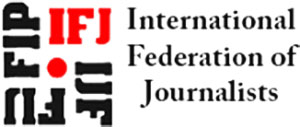According to the International Federation of Journalists, in 2018 alone, at least 94 journalists were killed. The 2018 data indicates an increase from the previous year which concluded with 82 fatalities. The most dangerous countries for journalists in 2018 were Afghanistan with 16 fatalities and Mexico with 11, followed by Yemen with 9, Syria with 8 and India with 7. The data, presented by Reporters Without Borders (RSF), identifies slightly lower numbers of fatalities at 80 (with 49 deliberately killed and 31 killed while reporting). The RSF report further confirms that three journalists were reported missing, 60 held hostage and 348 detained. RSF names Afghanistan as the most dangerous place for journalists with 15 fatalities, followed by Syria with 11, Mexico with 9, Yemen with 8 and US and India with 6 each. Despite the difference in figures, both agree that 2018 witnessed an increase in such fatalities and the level of threat to journalists.
The serious threat to journalists’ safety is characteristic of conflict areas. However, the mentioned reports feature many countries without reputations for active armed conflicts. Places like Mexico, US or India. In the US for example, four journalists employed by the Capital Gazette in Annapolis, Maryland, were killed on June 28, 2018, when a man walked in and opened fire.
Recent years have shown that even strong and stable European countries do not escape violence against journalists. For example, in October 2017, Daphne Caruana Galizia, a Maltese journalist exposing government corruption and misconduct by Maltese politicians and Panama Papers, was murdered in a car bomb attack in Malta, a place considered to be peaceful and safe. Nineteen months later, Maltese investigators are still no closer to exposing those responsible for the act.
In February 2018, Slovak investigative journalist Ján Kuciak, who had been investigating corruption allegations linking Slovak businessman and politicians to Italian organised crime, was murdered alongside his fiancée Martina Kusnirova. Investigative journalism on the subject of corruption also claimed the life of Bulgarian journalist Victoria Marinova in October 2018.
Aside from concerning fatality rates, it is crucial to emphasise the high numbers of journalists being detained because of their investigative work. According to RSF, in 2017, more than half of the world’s imprisoned journalists are being held in just five countries: China (with 60 imprisoned), Egypt with 38, Turkey with 33, Saudi Arabia with 28 and Iran with 28.
To respond to some of the identified challenges, only a few weeks before the World Press Freedom Day, British Foreign Secretary, Jeremy Hunt, and Canadian Foreign Minister Chrystia Freeland launched a joint initiative “Defend Media Freedom” that aims to shine a spotlight on media abuses and address the trend of violence against journalists. On July 10 -11, 2019, the UK and Canada will host the International Conference on Media Freedom to further the aims of the joint campaign. Another initiative that needs to be mentioned is TrialWatch® launched by the Clooney Foundation for Justice in cooperation with the Office of the United Nations High Commissioner for Human Rights, the American Bar Association, Columbia Law School and Microsoft. Among others, the initiative will monitor trials of journalists around the world to ensure that the judicial system is not used to silence journalists and curtail freedom of speech.
The above overview portrays only the tip of the iceberg of challenges that journalists face on a daily basis while trying to deliver news and inform the public about the situation around the world. The issue cannot be ignored anymore. It is time to take a strong stance on the issue.
Ewelina U. Ochab is a human rights advocate and author of the book “Never Again: Legal Responses to a Broken Promise in the Middle East.”









